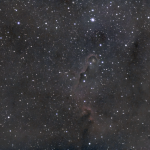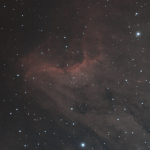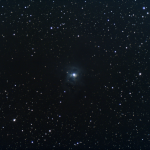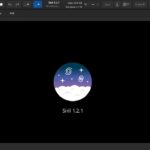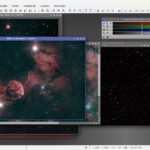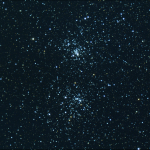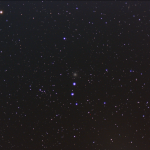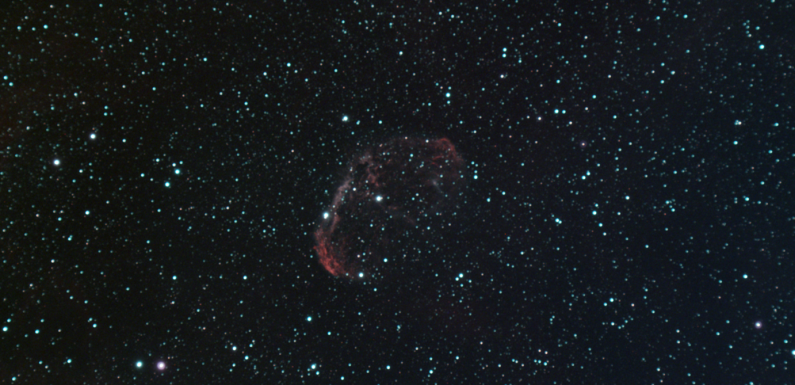
A clear warm night with a very bright full Moon. I started a soon as the Sun went down hoping to get some views before the Moon was too high in the sky. I had a plan for three nebula, the Crescent Nebula, the Pelican Nebula, and the Elephant Trunk Nebula… I was successful with two before I started having an issue with exposure timeouts on the camera 🙁 I wanted to get an hour of 2 minute exposures on each object to do some post process practicing in Siril.
I broadcasted this EAA session on Night Skies Network and that was a lot of fun. Had over 40 users drop in to view the broadcast and some great discussions with some folks there.
I uncovered the scope late in the afternoon. Cabled everything up and checked the balance of the gear. As soon as it was dark enough I ran the Ekos Focus routine (6676 steps) and then the Ekos Polar Alignment. Plate solving was calculating the focal length at 700 mm (F/6.9). I am using my darks from the other night but I still have not shot any new flats.
The EAA images in this post were capture with my ZWO ASI294MC Pro cooled to -10 C through my SVBONY SV503 102ED Scope with a UA adjustable field flattener and the ZWO Duo-band Filter. The SV503 is focused using a ZWO EAF and the Ekos Focus Module. Guiding is accomplished with an Orion Starshoot Autoguider (OSSAG) attached to a SV106 60mm guide scope. All gear is mounted on a Sky Watcher EQ6-R Pro. The mount and cameras are remotely controlled with KStars/Ekos via an INDI Server running on a Libre SBC. The images were live stacked using SharpCap Pro. Images have been resized (80% of original) and/or cropped for file size but otherwise appear just as I observed them.
NGC 6888, the Crescent Nebula, is an emission nebula located in the constellation of Cygnus. This is a SharpCap live stack of 30 x 120 second exposures, 121 gain, 8 offset, and bin 2×2.
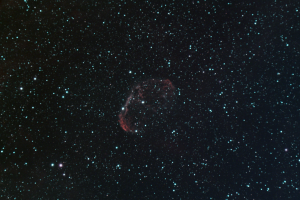
The Crescent was visible from the very first frame and details continued to build as each new 2 minute exposure stacked. Looking forward to working with this data is Siril.
While this was stacking a couple of the NSN viewers, Norm and Joe, mentioned the Soap Bubble Nebula which is faint planetary nebula near the Crescent Nebula but just outside of my FOV. Looking forward to giving that a try on a night when the Moon is not so bright.
IC 5070, the Pelican Nebula, is an emission nebula in the constellation of Cygnus. This is a SharpCap live stack of 30 x 120 second exposures, 121 gain, 8 offset, and bin 2×2.
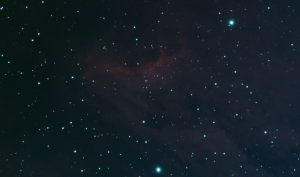
Probably some of the best captures of the Pelican Nebula that I have done. The image above is a bit darker than on the live stack view, but there is a fair bit of detail in there. Going to do some post processing on this one as well.
My final object was going to be IC 1396A, the Elephant’s Trunk Nebula, but I started having some issues with my camera and an exposure time out error. I had this same issue the other night and I thought is was due to a network issues (there was a network issue, and I fixed it) but it looks like the two issues may not be related. It was late and I already had good data from two objects so I decided to leave the troubleshooting to another time.
I packed up and covered the scope around 11 PM. Great night observing, capturing data, and chatting with folks on Night Skies Network.

